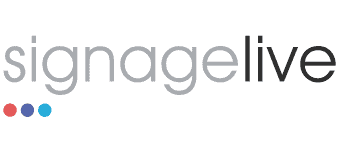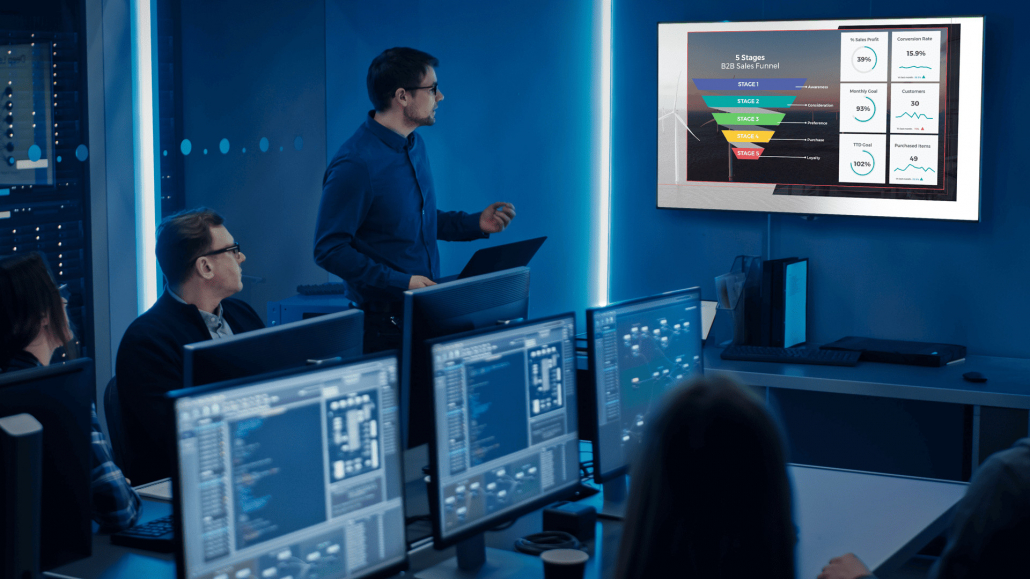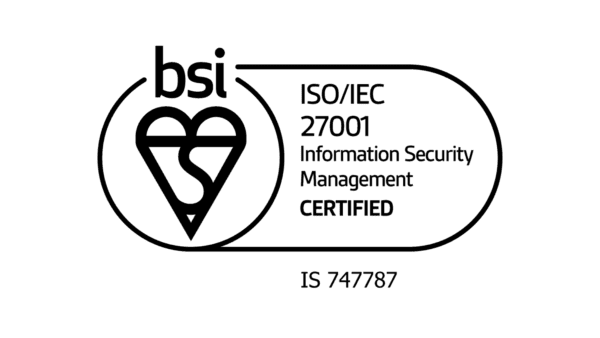What does future-proofing mean for digital signage, and why does it matter?
According to Wikipedia, future-proofing, as a concept, is “the process of anticipating the future and developing methods of minimising the effects of shocks and stresses of future events.”
In the context of digital signage, this means ensuring longevity, success and sustainability; it’s about finding ways to ensure you have a long-lasting working solution that can keep up with your business’s growth and evolution, as well as socio-economic changes.
In the fast-paced world of communications, speed, flexibility and up-to-the-minute technology are always going to be key. If you invest in a digital signage network – in all the digital signage software, screens and media players required, the last thing you need is for the technology to become outdated, irrelevant and even obsolete in just a matter of months.
So, how do you future-proof digital signage?
For a start, you think ahead. You make a plan that syncs with the long-term objectives and growth that you expect for your business.
Doing this with the input of resellers, partners and integrators can be helpful. They have the insight, connections and market knowledge to guide you, based on what kind of communications support you need.
It’s also worth being cognisant of technology and communications trends that you see emerge. To stay ahead of the curve, don’t just look out for new technologies being used in your own sector, but also in others. Think about how they could be adapted to suit your business model and give you a competitive edge.
Once you have an idea of what communications support you need in the long-term, you can start to see which digital signage technologies could potentially help. Here are a few pointers on how to ensure you invest in the most future-proof solutions.
Consider scalable cloud-based digital signage
Whatever your project, cloud-based digital signage is always likely to be a good option, thanks to its scalability – its potential to be rolled out to as many screens as you need, without requiring any new system.
With cloud-based content management solutions, there’s also no limit to the number of users you can have. The most future-ready solutions come, in addition to this, with enterprise-ready functionality, which helps you roll out streamlined and efficient management processes for even the most complex, multi-network set-ups.
Look out for extra security features
Security might not seem like a top consideration, when you first launch your network, but as your business grows and you start to store and share more data, it will become increasingly paramount.
That’s why, right from the start, it’s worth dealing with verified ISO-27001-certified companies that have secure data processes, and investing in solutions with extra features, like Multi-Factor Authentication (MFA) for safer logins.
Invest in flexible software solutions
As you expand your digital signage network, you won’t always be able to use the same hardware as before, so it’s usually best to invest in a software solution that’s compatible with most brands of screens and media players. Without this flexibility, you risk tying your business to out-of-date models, and losing the very agility that your business needs to grow.
Search for the latest multimedia content support
The kind of content you want to publish will inevitably change over time. It’s important to get a handle on the implications of this, right from the jump. You can do this by anticipating your own content generation needs, and the impact changing media trends could have on your output and traction.
Not so long ago, most digital signage content was made up of static HD imagery. Now, with the help of integrated CMS tools, such as Poster my Wall, which require no HTML coding to use, content mixes tend to include at least some dynamic HTML and/or video content – and often in 4K resolution.
The point is things change – and at a rapid pace. To stay competitive, you need to recognise and look out for hardware and software that lets you deliver new multimedia content and in the best possible picture quality.
Content management systems (CMS) now come with as many as 500+ integrated tools and applications, which could potentially give you the support you need to create and deliver new forms of content. Integrated CMS tools can now, for instance, help you to re-purpose and amplify the reach of your social media channels by enabling you to display curated feeds.
Integrated CMS data applications are also being developed to support real-time data story-telling. They’re built to connect with most business intelligence tools, making it quick, easy and secure to deliver hourly reports, KPIs and updates via your company signage.
Leverage the benefits of IoT solutions
The Internet of Things is changing the face of communications, so ideally, you want a digital signage solution that at least gives you the potential of leveraging this trend for your marketing strategies. Several digital signage IoT solutions are already on the market, with some content management systems enabling you to control connected devices in the environment, so you can boost the impact of your on-screen messaging.
Collect data to build on your success
To truly future-proof your digital signage, you’ll also need to find ways of continuously assessing, adapting and building on the success of your campaigns. This is where another rising trend, Artificial Intelligence could help. Integrated CMS Vision AI solutions are becoming increasingly popular, enabling you to set up AI-enabled cameras, so you can collect anonymous data about published content.
Drive your sustainability goals
No corporate strategy is now complete without sustainability goals and targets, so it makes sense to consider the long-term environmental impact of the digital signage equipment you purchase. While digital signage is certainly more eco-friendly than print advertising, the hardware you choose will help optimise your efficiency moving forward. Screens now come equipped with a whole host of energy-saving features.
These include
- Smart motion sensors that switch the screens to sleep mode whenever they’re not in use
- Automatic screen brightness reduction to suit dimmer ambient lighting
- Schedulers to pre-set your displays to switch on or off.
Future-proofing digital signage is critical to the long-term success and sustainability of your network, enabling you to adapt quickly and flexibly to changing market conditions. It’s probably one of the most sure-fire ways of protecting your investment, ensuring that your solution can evolve and grow with your business.






